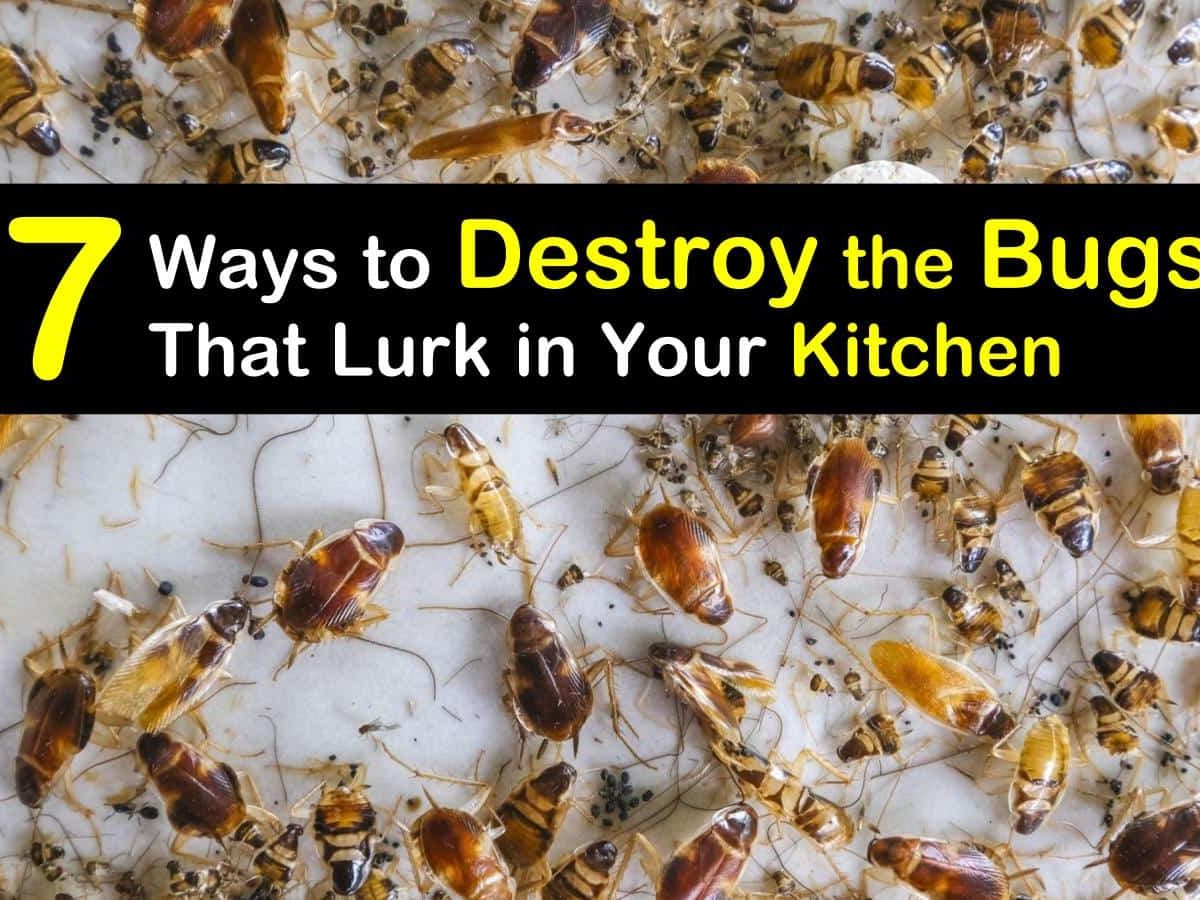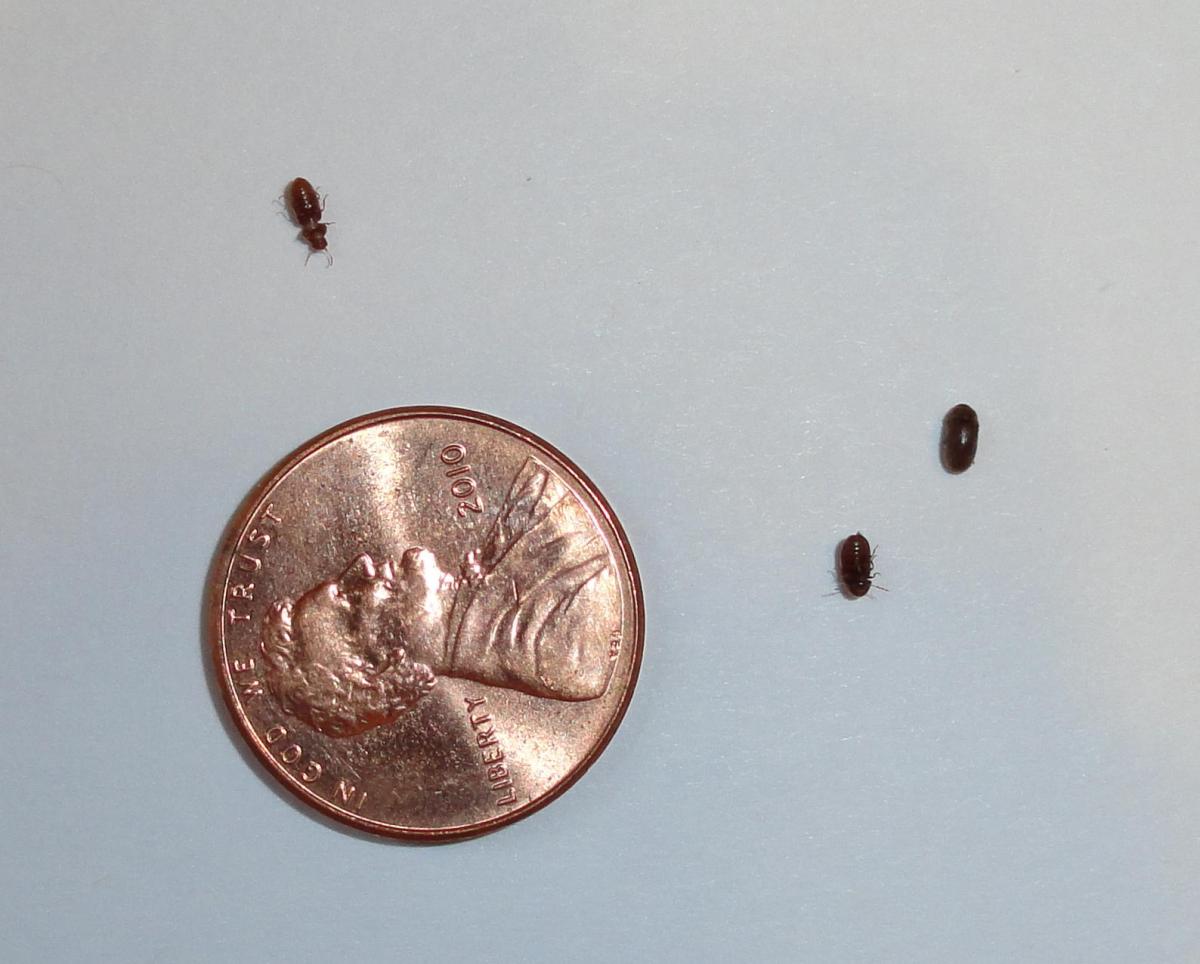Understanding Bed Bug Behavior in Kitchens: Bed Bugs In Kitchen Cabinets

You might be thinking, “Bed bugs in the kitchen? That’s crazy!” But, trust us, it happens. Bed bugs aren’t picky about where they hang out, and kitchens can actually be pretty appealing to them.
How Bed Bugs Get Into Kitchen Cabinets
Bed bugs are sneaky little critters. They can hitch a ride on your clothes, bags, or even furniture. If you’ve brought something into your home that’s infested, there’s a chance they could end up in your kitchen. They’re also excellent climbers and can easily travel from room to room, including from your bedroom to your kitchen.
Conditions That Attract Bed Bugs to Kitchens
Kitchens are warm, humid, and often have food crumbs and spills. These are all things that bed bugs love. They’re attracted to the warmth and moisture, and the food scraps provide them with a tasty meal.
Common Kitchen Items That Bed Bugs May Infest
Bed bugs are not picky eaters. They can find a meal in almost any place where there’s food or even just the smell of food. Here are some common kitchen items they might infest:
- Food storage containers: They can hide in the cracks and crevices of containers, especially those that are rarely used.
- Spice racks: The small spaces between spices provide a perfect hiding spot for bed bugs.
- Drawers: They can hide in the cracks and crevices of drawers, especially those that are rarely used.
- Underneath appliances: Bed bugs love the dark, warm spaces underneath appliances like ovens, refrigerators, and dishwashers.
Signs of Bed Bugs in Kitchen Cabinets
If you see any of these signs, you might have bed bugs in your kitchen cabinets:
- Small, dark spots: These are bed bug droppings. They look like tiny black pepper flakes or coffee grounds.
- Tiny bloodstains: These are caused by bed bugs feeding on humans or animals. They’re usually found on sheets, pillowcases, or even on your kitchen counter.
- A sweet, musty smell: This is the smell of bed bug pheromones, which they use to communicate with each other. It’s a pretty distinct smell, and you’ll notice it if you have a large infestation.
- Bed bug shed skins: These are the empty exoskeletons that bed bugs leave behind as they grow. They’re usually found near where bed bugs are active.
Potential Risks and Consequences

Yo, bed bugs in your kitchen? That’s not just a gross situation, it’s a real health risk, especially if you’re talking about food prep areas. These little bloodsuckers can mess with your health and your food safety, so it’s crucial to get rid of them ASAP.
Health Risks Associated with Bed Bug Infestations in Kitchens
Bed bugs, besides being super annoying, can actually cause some health issues. They bite, and those bites can lead to allergic reactions, skin infections, and even psychological distress. Some people develop intense reactions to bites, with symptoms like swelling, redness, itching, and even blisters. In severe cases, these bites can become infected, requiring medical attention. Imagine that – you’re trying to cook a meal, and you’re dealing with itchy bites!
Potential Impact of Bed Bugs on Food Safety
Now, let’s talk about the food. Bed bugs are not known to directly transmit diseases, but they can contaminate food surfaces and utensils. They can crawl around your kitchen, leaving behind their droppings and shed skins, which can contaminate food and surfaces. This can lead to food poisoning and other foodborne illnesses. Plus, imagine finding a bed bug in your cereal box or on your veggies – it’s enough to make you lose your appetite!
Challenges and Difficulties in Eliminating Bed Bugs from Kitchen Cabinets
Getting rid of bed bugs in your kitchen cabinets is a real challenge. These little guys are sneaky and can hide in the tiniest cracks and crevices. Kitchen cabinets are often filled with food, making it difficult to treat the area without contaminating your supplies. You might have to remove everything from your cabinets, clean them thoroughly, and treat them with pesticides. Plus, you need to be careful about using pesticides around food, so it’s important to follow the manufacturer’s instructions carefully.
Preventing Bed Bugs from Entering Kitchen Cabinets
Yo, prevention is key when it comes to bed bugs. Here’s how to keep those creepy crawlies out of your kitchen:
- Inspect Regularly: Check your cabinets and pantry regularly for signs of bed bugs, like tiny black dots (droppings), shed skins, or live bugs.
- Seal Cracks and Crevices: Bed bugs love to hide in small spaces. Caulk any cracks and crevices in your cabinets and walls.
- Clean Regularly: Keep your kitchen clean and tidy. Vacuum and dust regularly, especially around cabinets and under appliances.
- Store Food Properly: Store all food in airtight containers. This will help to prevent bed bugs from getting into your food and contaminating it.
- Wash Dishes and Utensils: Wash dishes and utensils immediately after use. Don’t leave them sitting in the sink, as this can attract bed bugs.
- Avoid Bringing Bed Bugs into Your Home: When you travel, be careful not to bring bed bugs back with you. Inspect your luggage and clothing carefully before bringing them into your home.
Effective Bed Bug Control Strategies in Kitchens

Bed bugs in kitchens can be a real pain, but don’t worry, there are some effective strategies to kick them out for good. The key is to understand that bed bugs are sneaky little creatures, and a multi-pronged approach is usually the best way to get rid of them.
Recommended Pest Control Methods
There are a few different methods you can use to control bed bugs in your kitchen cabinets. These methods can be used individually or in combination, depending on the severity of the infestation.
- Heat Treatment: This method involves heating the entire kitchen to a temperature that kills bed bugs. This is a very effective method, but it can be expensive and may require you to remove all food from the kitchen.
- Chemical Insecticides: There are many different types of chemical insecticides available, but it’s important to choose a product that is safe for use in your kitchen. Some insecticides are specifically designed for bed bugs, while others are more general-purpose. Always follow the manufacturer’s instructions carefully and wear protective gear when applying insecticides.
- Diatomaceous Earth: This is a natural powder made from fossilized algae. Diatomaceous earth works by dehydrating bed bugs, which eventually kills them. It’s a safe and effective method for controlling bed bugs in kitchens. Sprinkle it in cracks and crevices where bed bugs might be hiding.
- Vacuuming: Vacuuming is an important part of bed bug control, as it can help to remove bed bugs and their eggs from your kitchen cabinets. Make sure to use a vacuum with a HEPA filter to prevent bed bugs from escaping back into your kitchen.
- Steam Cleaning: Steam cleaning can be effective for killing bed bugs, especially in areas where they might be hiding, like cracks and crevices in your kitchen cabinets. Make sure to use a high-temperature steam cleaner, and follow the manufacturer’s instructions carefully.
Comparison of Pest Control Options
Here’s a breakdown of different pest control options, comparing their effectiveness, safety, and cost:
| Method | Effectiveness | Safety | Cost | Heat Treatment | Very Effective | Generally Safe | High | Chemical Insecticides | Effective | May be Toxic | Moderate | Diatomaceous Earth | Effective | Safe | Low | Vacuuming | Effective for Removal | Safe | Low | Steam Cleaning | Effective | Generally Safe | Moderate |
|---|
Preparing Your Kitchen for Treatment
Before you begin any bed bug treatment, it’s important to prepare your kitchen. Here are a few steps to take:
- Remove all food and dishes from the kitchen. This includes food from your cabinets, refrigerator, and pantry.
- Clean and disinfect all surfaces. This includes your countertops, cabinets, and appliances. You can use a mild bleach solution or a commercial kitchen cleaner.
- Remove all clutter from the kitchen. Bed bugs love to hide in clutter, so it’s important to get rid of anything that’s not essential.
- Cover all furniture and appliances with sheets or plastic. This will help to prevent bed bugs from hiding in these areas during treatment.
Cleaning and Disinfecting Kitchen Cabinets After Bed Bug Removal, Bed bugs in kitchen cabinets
Once you’ve treated your kitchen for bed bugs, it’s important to clean and disinfect your cabinets thoroughly. This will help to prevent bed bugs from returning.
- Empty all cabinets. Remove all items from your cabinets and inspect them for any signs of bed bugs or their eggs.
- Vacuum the inside of the cabinets. Use a vacuum with a HEPA filter to remove any remaining bed bugs or their eggs.
- Wash the shelves and drawers. Wash the shelves and drawers in hot soapy water and then rinse them thoroughly.
- Disinfect the cabinets. You can use a mild bleach solution or a commercial kitchen cleaner to disinfect the inside of your cabinets.
- Allow the cabinets to dry completely. Before you put anything back in your cabinets, make sure they are completely dry. This will help to prevent mold and mildew growth.
Bed bugs in kitchen cabinets – Bed bugs are notorious for hiding in crevices and cracks, and kitchen cabinets can unfortunately become a breeding ground. While you might be tempted to store your belongings in a Wayfair two-door cabinet for added organization, remember that bed bugs can easily hitch a ride on your belongings.
To prevent an infestation, inspect your cabinets regularly and consider using a professional pest control service if you suspect any activity.
Bed bugs in kitchen cabinets can be a real nightmare, especially if they’ve made their way into your pantry. While you’re dealing with the infestation, you might notice some cracked cabinet doors, which can be unsightly and even pose a safety hazard.
If you’re looking to fix those cracks, check out this comprehensive guide on how to repair cracked cabinet doors. Once you’ve addressed the structural issues, you can focus on eliminating those pesky bed bugs and restoring your kitchen to its former glory.
